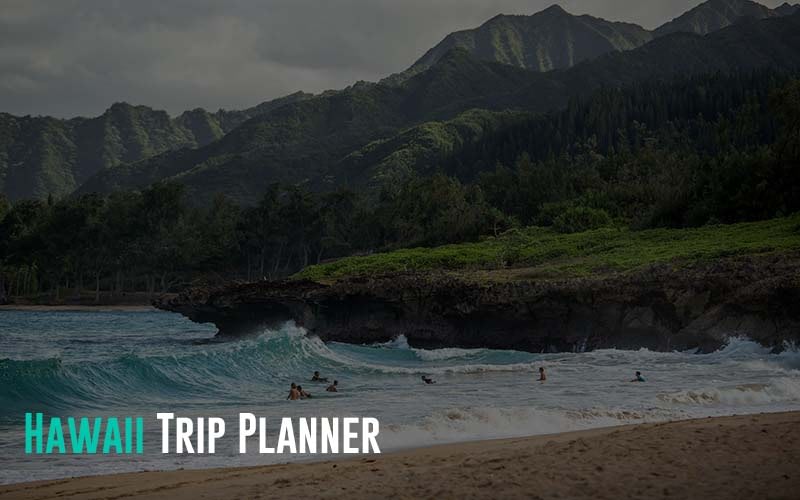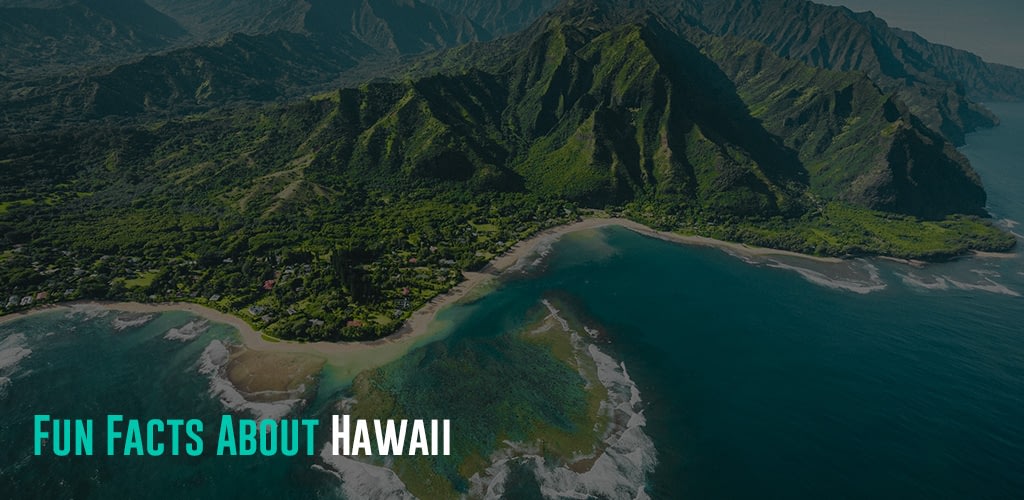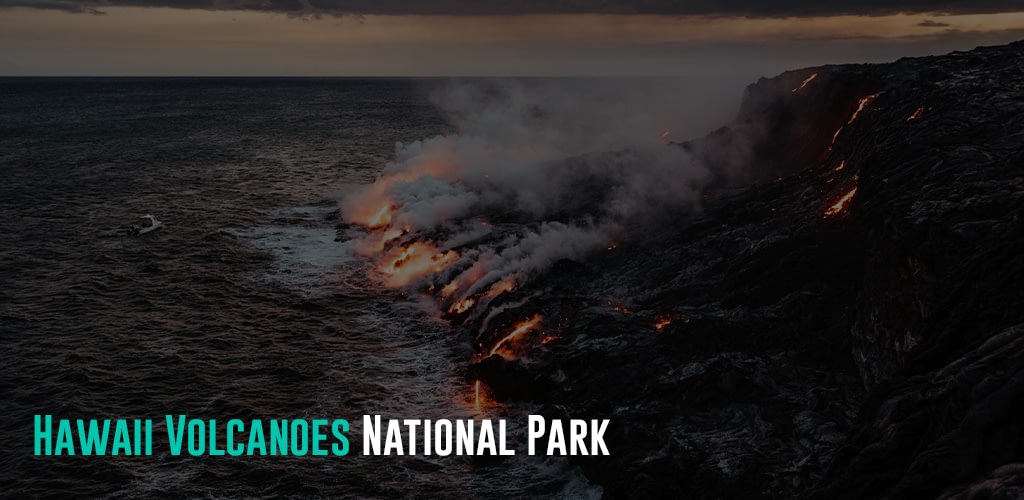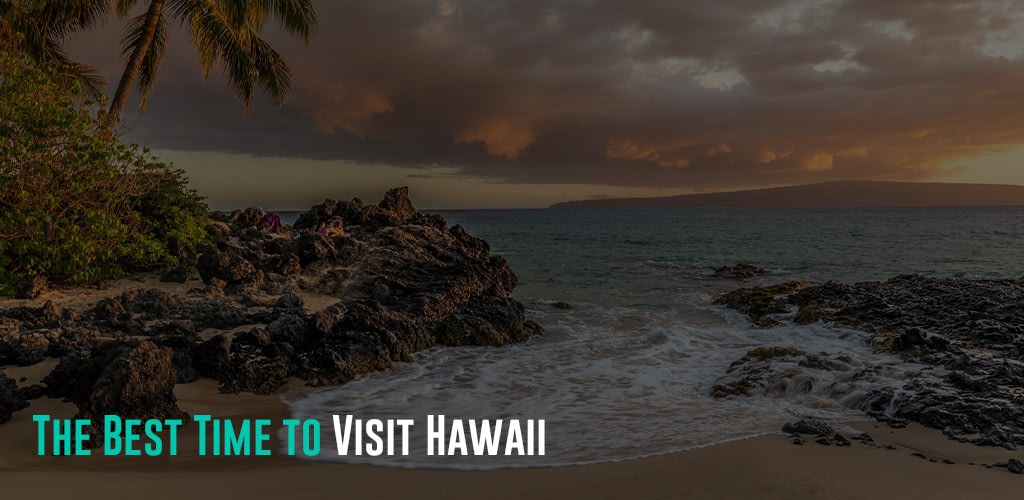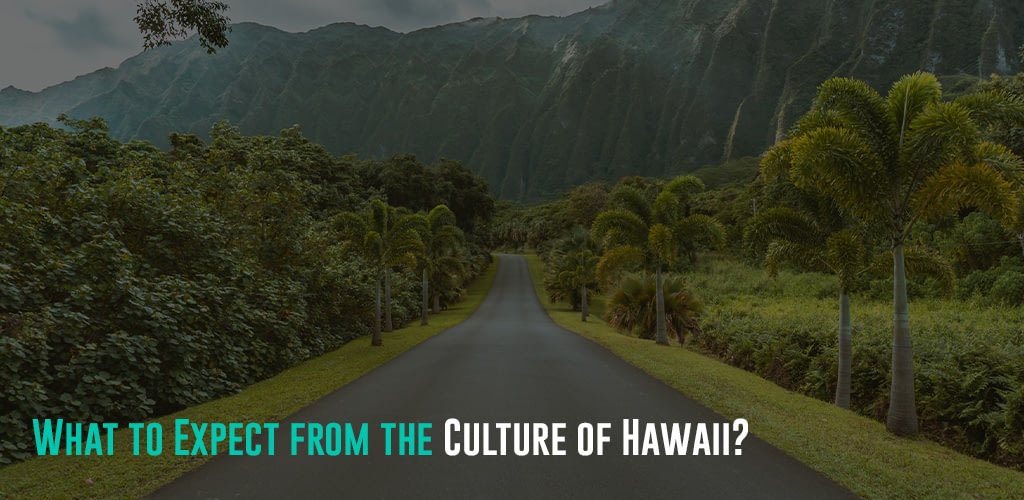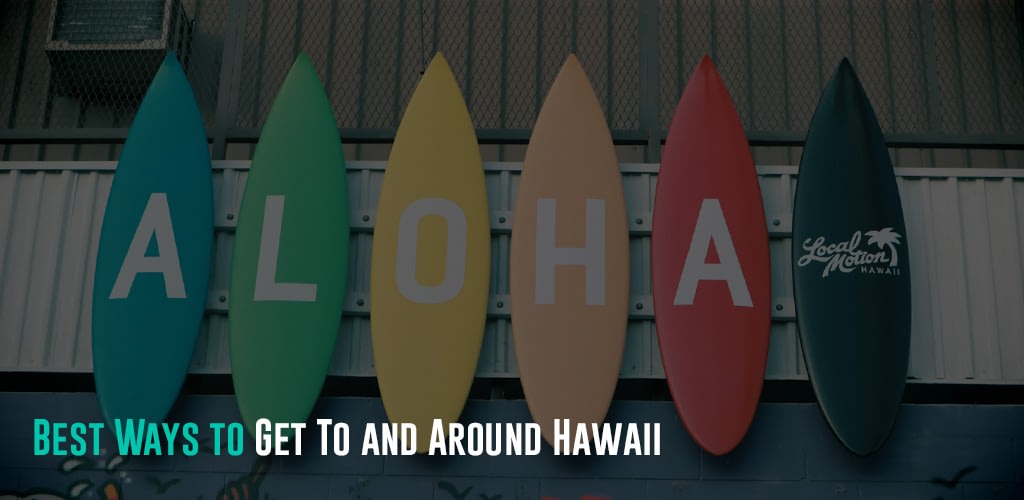When we picture sunny skies, swaying tree leaves, clear waters, and lush valleys, there is one name that pops up in everyone’s mind – Hawaii! This beautiful tropical island is renowned the world over for its beautiful landscapes and the ever-inviting Aloha culture. Not only is Hawaii the perfect vacation destination, but it is also a land full of rich heritage and spiritual bounty. Let’s discover more about this paradise on Earth and what you need to include in your Hawaii trip planner!
Hawaii is an island state of the USA, located about 2000 miles from the U.S. mainland. Being on the Pacific Ocean, it is the only U.S. state that is not on the North American mainland and the only one in the tropics. Being an archipelago, it consists of 137 volcanic islands, of which there are eight main islands. Honolulu, the state’s capital, is located on O’ahu Island, where a majority of the population lives. The state has about 1.4 million residents and is very ethnically diverse, with a beautiful amalgamation of North American and East Asian cultures and its own indigenous Hawaiian culture.
Vacationers planning a trip to Hawaii can indulge in a wide array of adventures and activities like hiking, kayaking, sailing, swimming, or just soaking up the sun. Come along as we discover more about the beautiful state of Hawaii, its culture, and how you can make the most of your vacation here.
Featured Image Source
Fun Facts About Hawaii
- Did you know that Hawaii is where surfing was born? This amazing sport originated in ancient Polynesia and was later embraced by Hawaiian royalty in the 19th century, making it incredibly popular.
- Did you know that in Hawaii, you’ll find the world’s most active volcano? Kilauea has been erupting nonstop since 1983!
- The Hawaiian alphabet is made up of just 12 letters! These letters are: A, E, I, O, U, H, K, L, M, N, P, and W. Isn’t that interesting?
- Hawaii operates on its own time zone called Hawaiian Standard Time (HST), which is 10 hours behind Coordinated Universal Time (UTC-10).
- Did you know that Hawaii is the only U.S. state that boasts a unique tropical rainforest climate? You can find this amazing climate on the windward sides of the islands.
Brief History of Hawaii
The islands of Hawaii were first settled by the inhabitants of the Marquesas Islands around 300 CE. Later, Tahitians arrived in the 9th century CE. The early Hawaiians did not have a written language, so they passed down their rich culture, myths, legends, and practical knowledge through storytelling. For 85 years, monarchs ruled Hawaii, and in 1820, New England missionaries arrived, and their influence brought significant changes. By the mid-19th century, written language was adopted, and European and American skills and religious beliefs, Protestant and Roman Catholic, became prominent. This marked a significant transformation of Hawaiian culture.
Over time, Hawaii became a U.S. territory, witnessing rapid population growth, the development of a plantation-based economy centered around sugar and pineapples, and closer military and transport connections with the U.S. Movements advocating for statehood emerged due to Hawaii’s tax obligations without equal representation. The attack on Pearl Harbor in 1941 led to Hawaii’s strong involvement in World War II, bringing military activity and curtailing civil liberties. Hawaii eventually achieved statehood in 1959 after following a lengthy constitutional process.
Since becoming a state, Hawaii has experienced a population and economic boom, with an increasing number of visitors. Outside investment from the mainland U.S. and Japan, coupled with rising real estate values, has contributed to the islands’ prosperity. Tourism remains the dominant industry in the 21st century, although Hawaii has also become a prominent hub for astronomy due to the Mauna Kea Observatory.
Despite being a popular destination, Native Hawaiians continue to advocate for land rights, greater autonomy in internal affairs, and the right to self-governance.
Top Things to Do in Hawaii
Hawaii has incredible sights that will leave you at a loss for words. Here are some of the top destinations to add to your Hawaii trip planner.
1. Hawaii Volcanoes National Park
Hawaii’s Big Island boasts the incredible Hawaii Volcanoes National Park, recognized as a UNESCO World Heritage Site. Here, you’ll have the opportunity to experience Mount Kilauea, the world’s most continuously active volcano, where you can actually walk on land that’s younger than you! And that’s not all – you can also explore the world’s largest volcano, Mauna Loa. To truly appreciate all the wonders this park offers, it’s recommended to set aside more than just one day on your Hawaii trip planner. There are plenty of educational stops to visit, including the Thomas A. Jaggar Museum, the Volcano Art Center, and the Puna-Ka’u Historic Archeological District. Additionally, the park offers a variety of hiking trails that provide the best vantage points.
2. Mauna Kea
While Hawaii is famous for its beautiful sunny days and picturesque beaches, the night sky in this tropical paradise is an absolute spectacle that should not be left out of your Hawaii trip planner. Located on the Big Island in Hawaii, Mauna Kea is renowned as one of the best spots in the world for astronomical observation. Its towering height provides an unobstructed view of the skies above.
As the day gives way to evening, prepare to be mesmerized by the breathtaking sight of the sunset and the night sky as it comes alive with a myriad of twinkling stars.
3. Hanauma Bay Nature Reserve
Hanauma Bay Nature Preserve is a fantastic spot for families to explore and snorkel alongside colorful fish and mesmerizing marine life. As a state park nestled within a volcanic cone, this beautiful preserve is naturally shielded from elements like wind and waves, making it an ideal destination for all nature enthusiasts. Due to conservation efforts, there is a limit on the number of visitors allowed per day. Some recent travelers have mentioned that obtaining a reservation can be challenging and suggest booking well ahead of time.
4. Diamond Head Crater at Waikiki
One of Hawaii’s most famous landmarks, Diamond Head Crater, is not only a popular backdrop in Waikiki but also a must-visit attraction in its own right. It offers one of Oahu’s finest hiking experiences, providing breathtaking panoramic views. Standing at a towering height of 760 feet (231 meters), the summit allows visitors to admire the Honolulu skyline and look down upon the vibrant Waikiki Beach. Here, one can witness the lively activity of surfers, paddlers, sailboats, and canoes as they playfully glide through the tropical waters. The journey upwards is totally worth it! Once you reach the top, you’ll be treated to breathtaking 360-degree views of the entire island.
5. Umauma Falls
Get ready for an exhilarating zipline experience that you won’t want to leave out of your Hawaii trip planner. This thrilling adventure takes you on a 30-mile journey through the Hawaiian jungle, offering stunning views of the river water and the soothing sounds of nature. As you zip through the air, keep an eye out for 18 majestic waterfalls, including the famous Umauma Falls. And if you’re lucky, you might just spot the native Hawaiian hawk known as ‘I’o’ soaring in the area. Don’t forget to add this incredible experience to your Hawaii trip planner!
The Best Time to Visit Hawaii
Hawaii has an amazing tropical climate all year round, with temperatures usually in the comfortable range of the mid-70s to mid-80s Fahrenheit (24-29°C). The best time to visit this beautiful place is usually during the shoulder seasons of spring (April to early June) and fall (September to mid-December). During these times, you’ll enjoy fewer crowds, great deals on accommodations, and delightful weather. Spring and Fall provide a lovely balance between drier weather and manageable rainfall, making it perfect for outdoor activities such as hiking, snorkeling, and exploring breathtaking landscapes. You can also immerse yourself in cultural events and festivals while avoiding the busy winter tourist season. Certain parts of Hawaii, like the windward (eastern) sides of the islands, get more rainfall compared to others. So, it’s a good idea to be prepared for occasional showers, especially if you’re planning to explore beautiful rainforests or hike the trails.
What Do You Need to Do Before Traveling to Hawaii?
When preparing for your trip to Hawaii, don’t forget to add these important steps to your Hawaii trip planner to make sure your vacation goes smoothly. First, make sure to book your accommodations in advance, especially during the busy tourist season, so you can get the accommodation you want. Next, take the time to research and plan your Hawaii itinerary, including all the fantastic activities and attractions you want to experience on the islands. Also, don’t forget to pack appropriate clothing for Hawaii’s tropical climate, like lightweight outfits, swimwear, and comfortable footwear for all your adventures. If you’re adding outdoor activities like hiking or snorkeling to your Hawaii trip planner, be sure to pack the right gear and equipment for those too.
What to Expect from the Culture of Hawaii?
The people of Hawaii have a laid-back approach to life whilst still being respectful of their culture, land, and oceans. It’s important to be a responsible tourist and keep these natural treasures clean and pristine by avoiding littering.
Take the time to appreciate and honor Hawaiian customs and traditions. Before entering sacred sites, it’s polite to ask for permission and be mindful of cultural practices like removing your shoes before entering someone’s home. At these places, it’s best to dress modestly and appropriately. While swimwear is acceptable at the beach, it’s a good idea to cover up when dining or shopping.
Although many people in Hawaii speak English, learning a few basic Hawaiian phrases is a lovely way to show respect for the local culture. Saying “Mahalo” (thank you) and “aloha” is not only commonly used but also greatly appreciated. When it comes to tipping, it is customary to leave around 15% to 20% of the total bill before taxes.
With these pointers in your Hawaii trip planner, you’re all set to respectfully enjoy this beautiful destination.
Is it Safe to Travel Solo in Hawaii?
Hawaii is considered a tourist-friendly and safe city to travel to. For the year 2023-2024, Honolulu took the top spot in the recent Safest Cities rankings by Berkshire Hathaway Travel Protection, which means that it is a trusted location for holidaying. Women and solo travelers also consider Hawaii a safe place for traveling. Natural hazards like hurricanes, earthquakes, and volcanic eruptions carry significant risks. However, with timely information and by following safety guidelines, you can better manage these threats.
Petty crimes like pickpocketing and scams are common all over the world, and there have been reports of these in Hawaii as well. Just remember to keep your belongings safe with you at all times and avoid engaging with anyone who seems suspicious. People can get tricked into paying for sights they can see for free, so remember to cross-check and research about the places you are visiting. Additionally, it’s best to steer clear of the Kamehameha Highway (Route 99) during nighttime as well as Makiki, Punchbowl, and Iwilei.
Best Ways to Get To and Around Hawaii
The most popular way to travel to Hawaii is by flying into one of the main airports, like Honolulu International Airport (HNL) on Oahu, Kahului Airport (OGG) on Maui, or Kona International Airport (KOA) on the Big Island.
Exploring the islands is a breeze with their well-kept roads and picturesque routes, making self-driving a great choice. Plus, Oahu, Maui, Kauai, and Hawaii Island offer affordable and convenient public transportation, like buses, to get you to all the must-see places.
If you’re in the city or need a quick ride, taxis and ridesharing services are readily available. If you want to island-hop, try inter-island flights or ferry services for a speedy and efficient journey. The best ways to soak in the local vibes and natural beauty are biking and walking.
Budget for Hawaii
Your overall expenses in Hawaii will depend on the duration of your trip and what you wish to see and do in the island state. But, in general, it’s good to budget around $342 per day, and average costs per day are – $77 on meals and $37 on local transportation.
On average, a three-star hotel will cost you around $350 per night, while a four-star resort goes for about $455 per night. If you prefer a cozy bed-and-breakfast inn, expect to spend around $190 per night.
As for activities, it is best to book everything in advance, so that you can acquire the best prices.
Find Paradise in Hawaii with Travel-Wise
Hawaii is the definition of beauty with substance. It is one of the most beautiful yet culturally rich places in the entire world. Traveling to Hawaii allows you to experience new and unique sights and soak up the locals’ bountiful heritage. With our Hawaii trip planner, you can make the most of your holiday and make memories for a lifetime.
Look no further than Travel-Wise to plan your Hawaii trip! Our AI-powered itinerary generator is here to help. With templates, itineraries, maps, and collaboration tools, you can design a personalized travel plan that suits your needs. Dive into each day of your trip, organize it down to the tiniest detail, and even keep a journal to share your adventures with fellow travelers. So why wait? Join Travel-Wise today and start making unforgettable memories on your Hawaii holiday.

